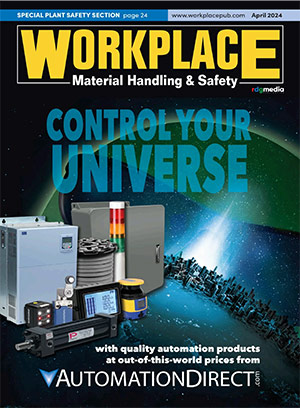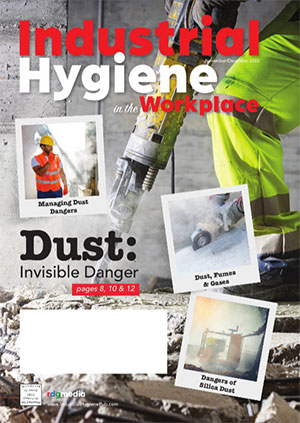How Employers Can Reduce the Risk of Slips, Trips and Falls
Dr. Kevan Orvitz, President and Founder of MEGAComfort
It’s important that employers make sure that all workers are wearing the right shoes for their workplace and environment. Many workboots and shoes offer slip-resistance and provide workers with traction.
In the workplace, slips, trips and falls are seemingly innocent hazards. Wet floors are often marked with a yellow sign, and many assume that’s all it take to avoid a slippery situation. However, these incidents are leading contributors to injury and even death in the workplace.
In fact, The National Safety Council Chartbook of 2016, titled Injury Facts, reported that falls resulted in 229,190 cases of absenteeism from the workplace and 724 deaths. These numbers are simply shocking, and employers need to be committed to reducing the risk of slips, trips and fall in the workplace.[1]
It Starts with Discussion
Communication is the key to any successful relationship and safety program. If employers want to mitigate damage, injury and loss, they need to feel comfortable talking about slips, trips and falls—and the hazards that cause them. Getting your workforce actively engaged in their own safety and the safety of their colleagues is important. Not only does it help management discover red flags within the workplace, but it creates a company culture of engagement, helpful communication and proactive safety measures.
Providing employees with an open forum to discuss their safety concerns in the workplace alleviates unspoken frustration. Managers and employers who engage with their workers help reduce stress and anxiety, managing expectations and providing everyone with relief. To accomplish this goal, offer employees incentives for sharing their thoughts and feelings about current workplace safety.
Safety from the Ground Up
Without knowing it, with every step our employees can make a healthful or hazardous decision. How and where workers walk and engage with their workplace effects their health.
First, it’s important to look at all employees’ workspaces. Wet surfaces require more than signs: They need constant attention. Many employers try to solve flooring issues by installing anti-fatigue matting. However well-intentioned these efforts are, these mats often peel and chip, creating unwanted additional workplace hazards. Workplaces that try to keep up with anti-fatigue matting maintenance often fail to do so, due to the high cost of replacement. Matting is typically limited in its ability to fully cover a work area, and employees are left with limited support, shock absorption and protection.
Instead, companies looking to prevent injury look for solutions that save time and energy, while improving workplace safety and employee satisfaction. Personal anti-fatigue insoles ensure each individual employee has constant foot support, comfort and shock absorption with every step they take. Insoles comprised of 100% dual-layer memory foam not only reduce fatigue but improve employee engagement. Not only is this a cost-effective solution but, by reducing tripping hazards, such as anti-fatigue matting, employees can walk with ease through the workplace and actually feel good on their feet.
Many companies now offer an insole program that provides insoles to employees. When employees are given complimentary personal safety equipment, they are more likely to use them. Ensuring your entire team wears personal anti-fatigue mat insoles allows management to ensure they are helping their employees reduce foot pain and avoid injury.[2]
Slips, trips and falls often happen because of faulty footwear. It’s very important that employers make sure that all workers are wearing the right shoes for their workplace and environment. Many workboots and shoes offer slip-resistance and provide workers with traction. In addition to ensuring workers have proper footwear, management should make sure footwear is free of holes and damage. If employees have poor footwear, it can become a tripping hazard.
A Clean House is a Safe House
Much like ensuring your home is clean, it’s crucial to keep your workplace in an orderly fashion. Good housekeeping is more than a goal; it needs to be a habit in which everyone takes part. It’s easy for people to want to stick to their own task and allow others to clean up their messes. Instead, employers need to make housekeeping a communal goal and habit. Managers and employers need to create an atmosphere of community and communication, so workers feel safe and assertive when voicing house-cleaning issues.
There are some simple hazards that all workers can evaluate and pitch in with, such as:[3]
- Immediately cleaning up spills
- Placing the proper signage when spills occur
- Ensuring floors are clear of debris
- Reporting carpets, rugs, and matting that is no longer flat or safe
- Keeping closets and cabinets closed
- Ensuring work areas are well-lit
- Replacing light bulbs that have burnt out
Being diligent about housekeeping helps prevent accidents and injuries before they occur.
Let There Be Light
Whether or not a workplace has natural or artificial light it needs to be constantly well-lit. Employers need to ensure that workers can see everything in their workplace easily. Dark spaces can utilize motion sensors that activate lighting when employees pass through.
Outdoor workplaces should have adequate lighting for workers that have to work in the evening or early morning.
Poor light and fatigue are a recipe for disaster. Ensuring that workers have a well-lit workspace keeps them alert and aware of their surroundings. If employers do not provide workers with a well-lit work area, they increase the likelihood of slips, trips and falls.
In conclusion, maintaining an open communication line with the team; ensuring safety from ground up with a good footwear and insole program; and keeping a clean and well-lit workspace can help reduce the risks of slips, trips and falls for employers. WMHS
[1] https://megacomfort.com/slips-trips-and-falls/
[2] https://www.ehstoday.com/foot-protection/hazards-affecting-your-employees-foot-safety
[3] https://www.ccohs.ca/oshanswers/safety_haz/falls.html



